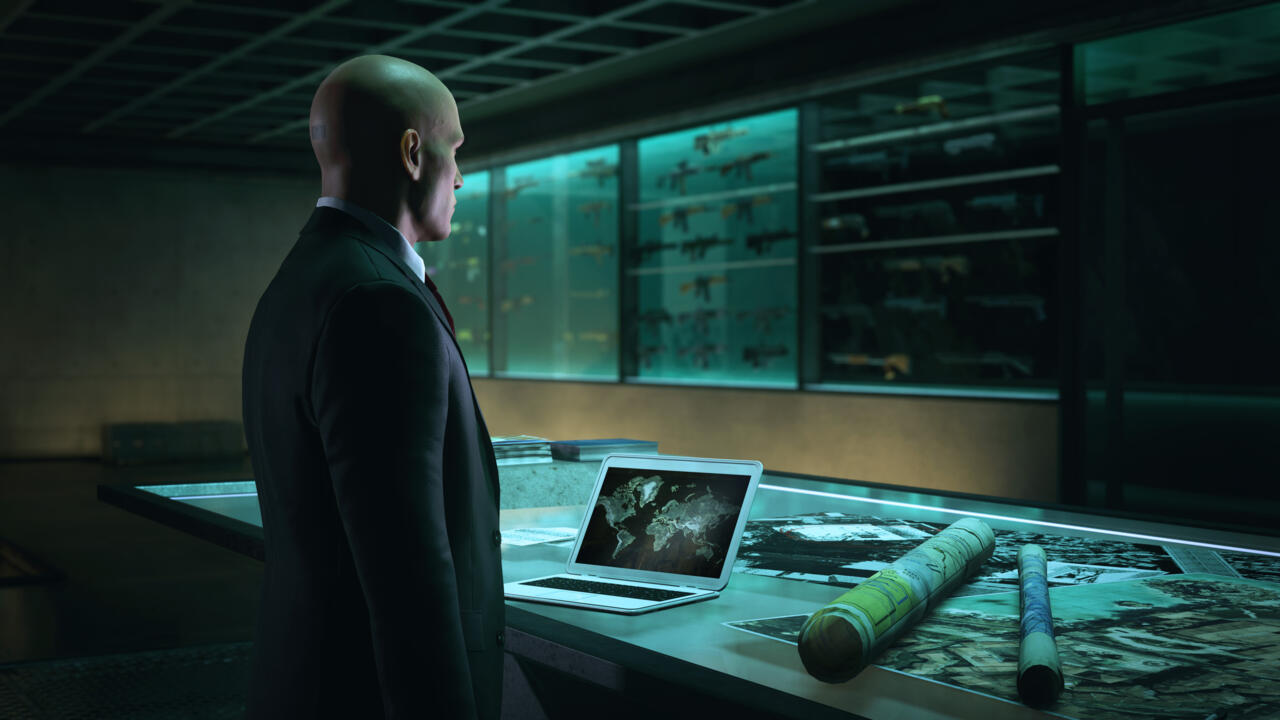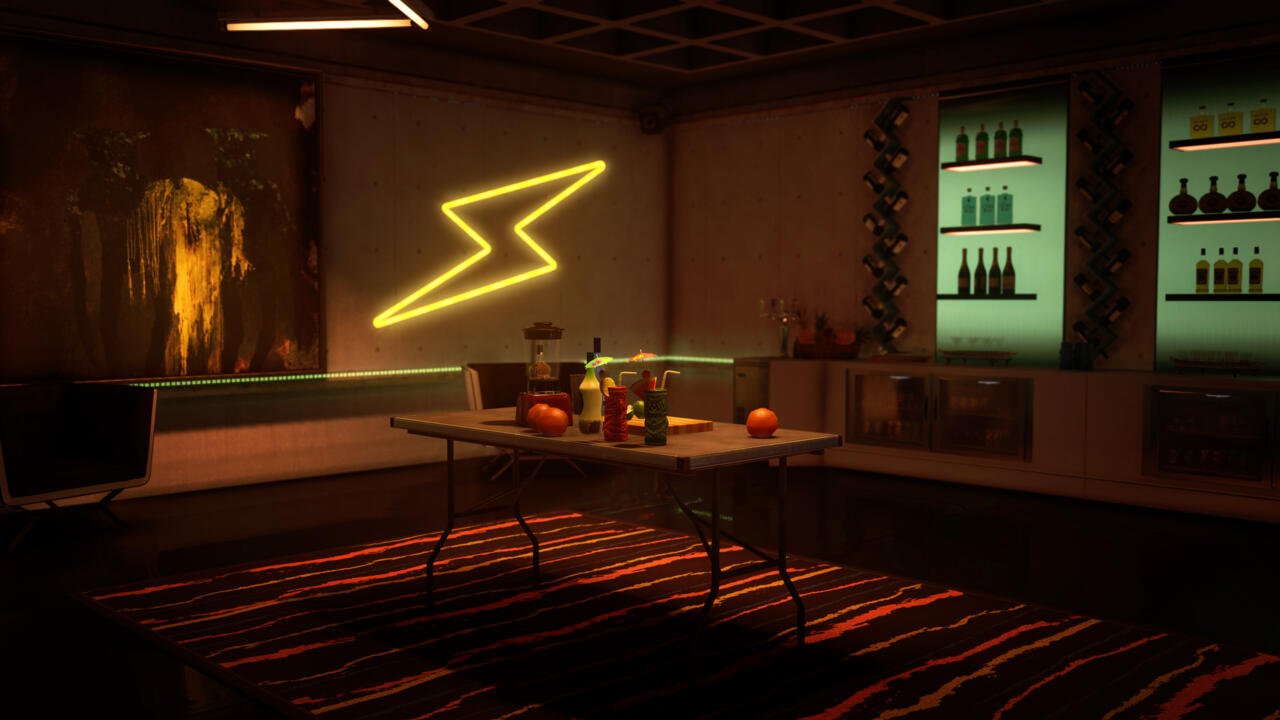No one would've guessed Hitman would go the way of the roguelite 24 months after its World of Assassination finale debuted, but an even bigger surprise is just how great the free update actually is. While roguelite fans are probably willing to give a new entry to the genre a try, I worry that, for others, the word "roguelite" may be enough to stop reading and shrug off the new Freelancer mode. But this would be a mistake, because Freelancer Mode pushes Hitman to new heights. We loved Hitman 3 so much that we named it one of the best games of 2021. Since then, we've continued to enjoy a long run of post-launch updates. In a surprising twist, the most recent addition has reimagined an already exceptional trilogy, making it a game of the year contender again.
In Freelancer, Agent 47's mission is to eliminate members of The Syndicate, a shadowy cabal whose function in the story is simply to give the bald assassin a renewed excuse to globetrot and hunt down the world's most wicked billionaires. The story-light mode consists of 18 missions in a single successful campaign, including four showdowns with bosses along the way. Fail any two missions, or one boss mission, and it's back to the start.
Each chunk of locations is pre-selected by you in groups of three, four, or five as you progress, so you'll want to lean into the levels you know well. For me, that's places like Paris, Sapienza, and Dartmoor, and less so stuff like Haven Island, New York, or the newest map, Ambrose Island. You can't handpick every level; instead, you select from established sets of levels. The tactical advantage comes in finding a group that has more of your favorites than not. This familiarity is key because so much else in Freelancer depends on variables that are beyond your control.
I like to call classic Hitman a "Rube Goldberg Death Machine," in which Agent 47 strings together a series of elaborate events on the way to drowning someone in a toilet, poisoning their fish dinner, or kicking them off a mountain during yoga class. In Hitman Freelancer, you can pick the map, but the game's way of handling other factors means it's less like Mouse Trap and more like poker--you'll take the hand you're dealt and try to make the best of it, working to improve your condition in smart ways. Sometimes that means embracing a mess, like shanking a target when they're alone in an alley even though you know the body will be found. So long as you're not on the scene when it happens, you'll avoid suspicion. In the story mode, this sloppiness is best avoided to maximize your score. But in Freelancer, it's more of a game of survival, because any fatal step could ruin the campaign.
With few supplies--some of which are lost upon campaign failure--and randomized targets, the decisive planning of typical Hitman is still possible, though not guaranteed. That's the beauty of the mode. In traditional Hitman, levels often demand quick decision-making and outside-the-box thinking--each location always operates within the same confines so that you're able to fully master it. If you play any mission enough, you eventually know by heart every single way to execute your targets, every stop along their elaborate loops, and every way to influence their lives in order to walk them to their deaths.
In Freelancer, the careful planning of choosing a loadout, a starting location, and a disguise are all gone, making the mode infinitely replayable and wildly unpredictable. It borrows from the game’s Elusive Target mode, which is importantly finite in the number of tries you get, but it does so in a way that is even more riveting, as here it’s not one level that hangs in the balance, but potentially 18 of them in the longest of runs. You might start a mission in one of many spots, from the entrance which you're used to in the story mode to something as dangerous as being behind enemy lines and out of costume. Each level takes the soup of what Hitman has always been and ladles out a serving. What you get is yours to finish, and if you spill it, you move to the back of the line.

Like the game's hardest difficulty, there's no save option, which makes every decision that much more important. The internal drama between needing to act quickly--as soon as a door shuts, or right after a guard turns their head for a brief moment, for example--is countered with the fact that you'll rarely feel ideally equipped. Because it's still Hitman in essence, Freelancer teases you to look before you leap, then throws you on a treadmill churning toward the cliffside anyway. It's a delicate balancing act, but IO nails it.
A Freelancer campaign contains four boss missions. Unlike other missions, which randomly assign a known target or targets, these boss missions cloak your future victim in the world's deadliest game of Guess Who. You'll be given some physical features of theirs--tattoos, hats, etc.--as well as intel on habits such as smoking or their having a sweet tooth. You'll be shown a few possible suspects, whom you then must follow, photograph, and observe until they tip their hands.
Some tells are easy--if my target has a hat and a suspect doesn't, I know it's not them. But others are tougher. What happens if multiple suspects fit most details? It builds on some of what we saw in the 7 Deadly Sins DLC, but combines it with other elements too. Bits of Elusive Targets, Escalation Contracts, and other peripheral modes all blend together in this life-or-death display of Hitman excellence.
Collectively, it requires a level of patience and attention to detail that the original story mode, despite its way of rewarding cleverness, doesn't demand. Kill the wrong boss and you'll likely have assassins swarm down on you, who themselves are lurking in plain sight on each boss level. These frantic moments, even as they so often result in failure, capture one of the best parts of the roguelite genre: feeling like the next run is the one where you put it all together.
The mode's randomized elements are tough but fair. My early goings in the mode barely saw me get past--or even to--the first boss (the third level), and it felt like a learning experience even as I've been playing the series for 20 years. Days later, after several hours in-game, I found that patience is everything in this mode, and never have I felt like the game set me up to fail. Instead, it wants to watch me squirm as I re-establish my understanding of the world, but still rewards me handsomely when I prevail. Even failure has its own rewards, as you'll keep some of your money earned as well as any guns you unlocked via the persistent ranking system.
If you still find yourself roguelite-averse, the mode's most unexpected feature might be what sways you. The game's hub takes place in a new safehouse which you can customize with many dozens of cosmetics including furniture, vehicles, and even new inventory items that you can bring into missions with you, such as on-hand wine bottles or bananas for knocking out guards. As Agent 47 makes his house a home, you benefit not just aesthetically but by having larger and more useful loadouts.

With maps that move the throwables around unpredictably, heading into a level with a melee weapon in your pocket is a massive advantage. I didn't know I wanted to be Agent 47's interior decorator until IO Interactive offered me the job. It's rewarding to climb the mode's Mastery ranks to unlock additional inventory slots and new persistent unlocks like new guns and items for use in missions, but I'm finding it just unexpectedly exciting to unlock a new motorcycle for Agent 47's garage or a new dining room table for his hideout.
While the cosmetic elements are there to serve as long-tailed endgame rewards--I've played for many hours and am only level 13 of 100--all the gameplay changes it makes are there to brilliantly reimagine what a Hitman game even is. Sometimes the debate comes up where we wonder if something like DLC or a new season of a live-service game can be enough to merit GOTY consideration years after an initial launch. I've long maintained that we should consider such games if we believe the changes are meaningful enough. In this case, I think Hitman Freelancer is not just a legitimate Game of the Year contender; it's the best thing to happen to Hitman since the series was reborn in 2016.






